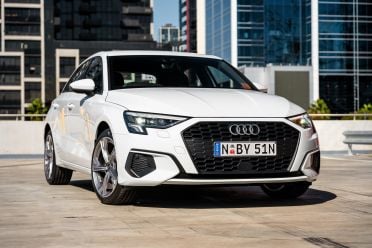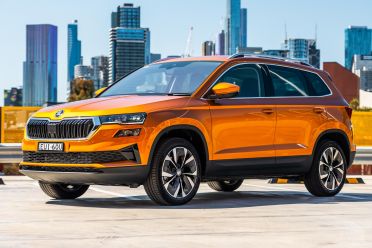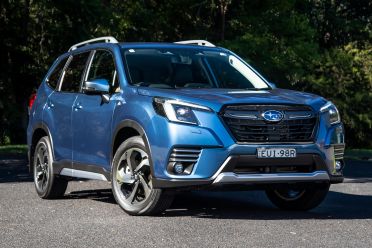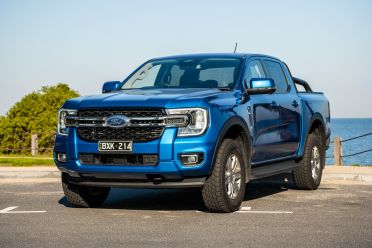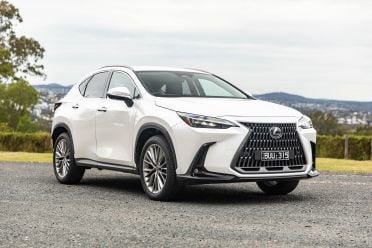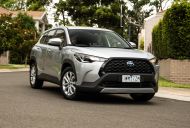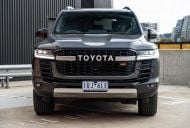It’s been a tough couple of years for many of Australia’s car brands, which have battled to source and deliver vehicles in the face of parts shortages, COVID outbreaks, and quarantine kinks.
But in 2023 we have seen some come roaring back at a faster pace than the overall market, which is up 8.2 per cent year-on-year (YoY) over the first half for its best first-half (H1) result since 2018.
One of the notable stories for this year so far is the performance of the Volkswagen Group, which has returned to better form on the back of what appears to be improved supply.
The Volkswagen brand’s 20,970 first-half sales is up 60.6 per cent YoY, the company posting its best figures since 2019 – in other words, it’s on a post-COVID bounce.
This is due largely to its core SUV models in the Tiguan family (up 203.3 per cent over the same period last year) and T-Roc (up 263.5 per cent).
The German titan has subsequently returned to the overall top 10 brands list, and with the new Amarok just now rolling out into dealers, a similarly strong second half surely awaits…
It’s a similar story for sibling brands Audi (9336 sales YTD, up 48 per cent) which posted its best H1 result since 2018, as well as Skoda (3967 sales YTD, up 20.7 per cent, its second-best result on record).
Audi’s growth has come from spikes in deliveries of the A3 (up 122 per cent), Q3 (up 40 per cent) and Q5 (up 29.2 per cent). Skoda’s return to some form is most attributable to the updated Karoq SUV (up 122.8 per cent).
Subaru, number-nine in-market this year, posted a 32.4 per cent gain over H1 to 22,502 units, with the Forester (up 45.6 per cent) and Outback (up 22.9 per cent) contributing the biggest share of additional volume.
It’s Subaru’s best H1 performance since 2018.
Ford is also tracking well this year, up 33.7 per cent to 38,182 sales for its best H1 result since 2017. Unsurprisingly the new Ranger 4×4 (up 29.2 per cent) has driven this despite ongoing wait times, alongside the Transit Custom (up 170.2 per cent).
Another traditionally big volume player that has bounced back to some degree is Nissan, up 13.3 per cent this year to 17,278 units. However, while this is an improvement, it’s down on the same period in 2021 (23,982 sales).
Nissan dealers went without enough new SUV product last year, with the new-generation X-Trail, Qashqai and Pathfinder making large impacts, and offsetting an alarming 41.2 per cent volume drop for the Navara.
Lexus in on track for an all-time record after moving 6910 vehicles over H1, up 75.5 per cent. Its biggest improver by volume is the NX (up 60 per cent), but the growth was nearly unanimous across its range.
Land Rover has also rebounded from a poor 2022 showing to be up 42.8 per cent to 3714 units for H1, with the Defender (1620 sales, up 111.8 per cent) its clear MVP.
Another Euro brand that’s up and about is Mini, which posted a 30.5 per cent volume gain over H1 for its best haul since 2018. The Countryman (up 70.2 per cent) was the driver.
Finally Peugeot, which is distributed in Australia by the same company as Subaru, is up 17.3 per cent this year to 1186 units, likewise for its best result since 2018 – driven in equal measure by gains from the new 308 small car and Partner van.
Big improvers in 2023
- Audi – 9336 sales, up 48 per cent, best result since 2018
- Ford – 38,182 sales, up 33.7 per cent, best result since 2017
- Land Rover – 3714 sales, up 42.8 per cent, best result since 2021
- Lexus – 6910 sales, up 75.5 per cent, best result to date
- Mini – 2136 sales, up 30.5 per cent, best result since 2018
- Nissan – 17,278 sales, up 13.3 per cent best result since 2021
- Peugeot – 1186 sales, up 17.3 per cent, best result since 2018
- Skoda – 3967 sales, up 20.7 per cent, best result since 2021
- Subaru – 22,502 sales, up 32.4 per cent. best result since 2018
- Volkswagen – 20,970 sales, up 60.6 per cent, best result since 2019


